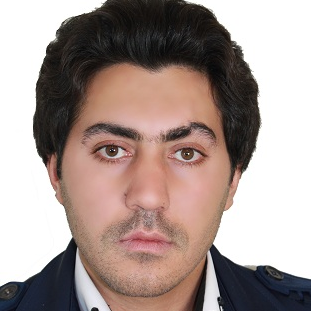
Akbar Majidi
Work place: Networks Laboratory and Advance Programming (NLAP), www.NS-3.org Germi, Iran.
E-mail: majidi86@gmail.com
Website:
Research Interests: Detection Theory, Control Theory, Data Structures and Algorithms, Process Control System, Database Management System, Intrusion Detection System, Computer Architecture and Organization, Computer systems and computational processes, Computational Science and Engineering
Biography
Akbar Majidi: was born on January 1986 in Ardabil- Germi, Iran. He received his B.Sc. degree in Software Engineering in 2009, and M.Sc. degree in Architecture of Computer
Systems from Iran University of Science and Research Branch, Kerman, Iran, in 2013. He has been the founder and also the president of Networks Laboratory and Advance Programming (NLAP) in Ardebil-Germi, Iran. His research interests are Information Centric Networking (ICN), Software-defined networking (SDN), Wireless Sensor and Wireless Multimedia Sensor Networks (WMSNs), Graph Theory and Ring Theory, Adhoc Network Protocols and Architectures, Congestion Control and Buffer Management, Intrusion Detection System and Attacks, Radio Frequency Identification (RFID) andVoice-over Internet Protocol (VoIP).
Author Articles
Introducing a Novel Algorithm for Energy Consumption Management for M2M Network Expandability Through Topology Control within Nodes
DOI: https://doi.org/10.5815/ijwmt.2014.04.05, Pub. Date: 1 Nov. 2014
The wireless sensor networks are most important developers of machine-to-machine communication (M2M) networks. In each node of sensor, transmission power is the most important energy consumption factor, which is considered as the most important challenge for expansibility of M2M network. One strategy to cope with this problem is topology control algorithm. This algorithm consists of two topology design and topology maintenance phases. The focus of most works conducted in this field is on design topography. However, topology maintenance should be also considered during the topology control design. To prolong network life through the energy consumption management in the nodes, in this paper an algorithm is proposed which considers both topology design and maintenance. The simulation results obtained using NS-2 simulator prove innovation and higher performance of the proposed model.
[...] Read more.Congestion Control in WMSNs by Reducing Congestion and Free Resources to Set Accurate Rates and Priority
By Akbar Majidi Hamid MIRVAZIRI
DOI: https://doi.org/10.5815/ijcnis.2014.09.05, Pub. Date: 8 Aug. 2014
The main intention of this paper is focus on mechanism for reducing congestion in the network by free resources to set accurate rates and priority data needs. If two nodes send their packets in the shortest path to the parent node in a crowded place, a source node must prioritize the data and uses data that have lower priorities of a suitable detour nodes consisting of low or non- active consciously. The proposed algorithm is applied to the nodes near the base station (which convey more traffic) after the congestion detection mechanism detected the congestion. Obtained results from simulation test done by NS-2 simulator demonstrate the innovation and validity of proposed method with better performance in comparison with CCF, PCCP and DCCP protocols.
[...] Read more.BDCC: Backpressure routing and dynamic prioritization for congestion control in WMSNs
By Akbar Majidi Hamid MIRVAZIRI
DOI: https://doi.org/10.5815/ijcnis.2014.05.04, Pub. Date: 8 Apr. 2014
Rapid technological advances and innovations in the area of autonomous systems push the researchers towards autonomous networked systems with emphasis on Wireless Multimedia Sensor Networks (WMSNs). In WMSN event-driven applications, it is critical to report the detected events in the area, resulting in sudden bursts of traffic due to occurrence of spatially-correlated or multiple events, causing loss of data. Also, nodes have very limited power due to hardware constraints. Packet losses and retransmissions resulting from congestion, cost precious energy and shorten the lifetime of sensor nodes. Till now, in WMSNs, Congestion control techniques are based on detection of congestion and recovery, but they cannot eliminate or prevent the occurrence of congestion. Collision is a symptom of congestion in the wireless channel and can result in a time-variant channel capacity. The method in the proposed algorithm is that the routing algorithms do not precalculate the routes and the next step is chosen dynamically. Decisions are made based on the congestion degree on neighbor nodes; each node sees its own queue backlog and neighbor's queue backlog and chooses its own degree and route based on the queue backlogs obtained from its neighbors. If there is two or more data with the same condition in the backpressure routing, we use service differentiation to prioritize packets. The results obtained from simulation test done by NS-2 simulator indicate that the proposed model is more innovative and presents better performance in compare with CCF and PCCP protocols.
[...] Read more.Other Articles
Subscribe to receive issue release notifications and newsletters from MECS Press journals